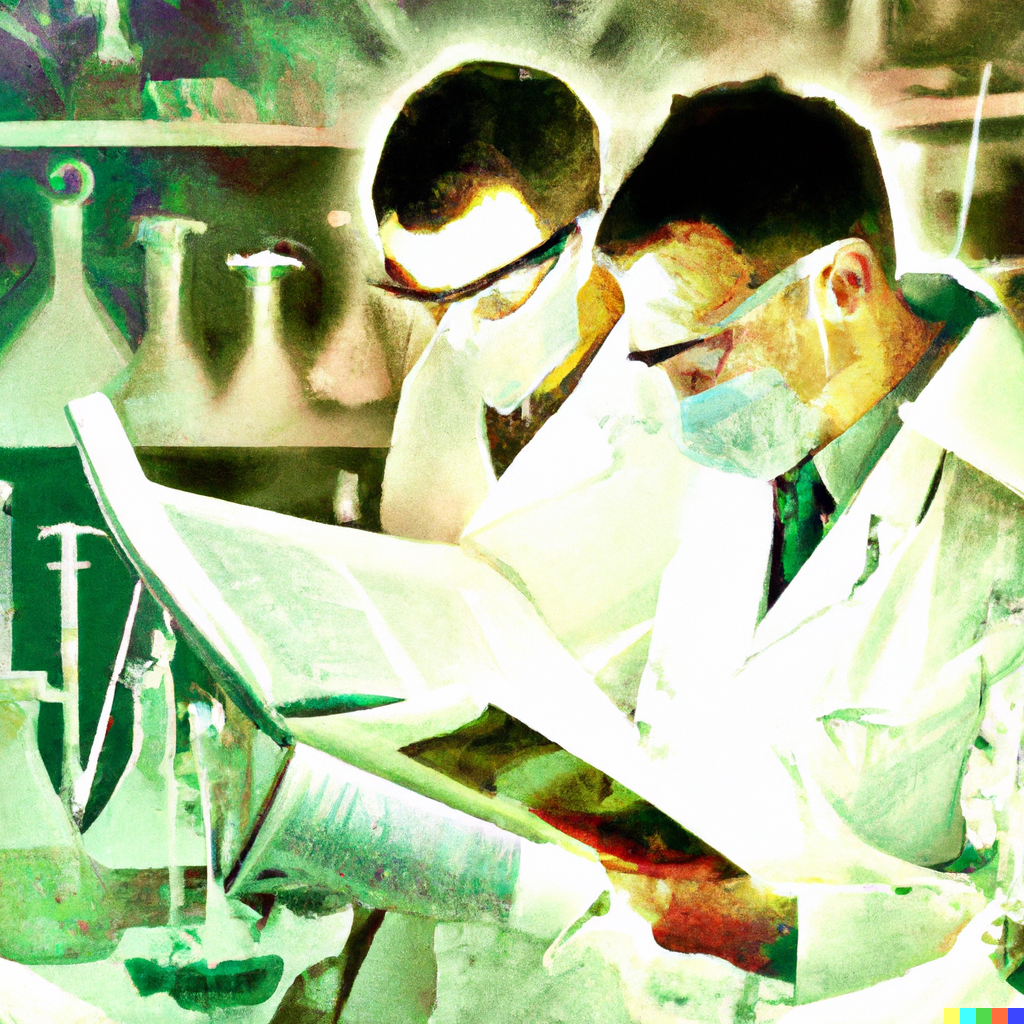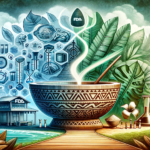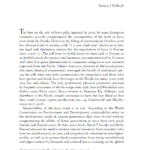Summary of: The Protective Effects of Kava (Piper Methysticum) Constituents in Cancers: A Systematic Review. By Antonio Celentano et al. 2019

Citation: Celentano, Antonio, Andrew Tran, Claire Testa, Krishen Thayanantha, William Tan-Orders, Stephanie Tan, Mitali Syamal, Michael J. McCullough, and Tami Yap. 2019. “The Protective Effects of Kava (Piper Methysticum) Constituents in Cancers: A Systematic Review.” Journal of Oral Pathology & Medicine: Official Publication of the International Association of Oral Pathologists and the American Academy of Oral Pathology 48 (7): 510–29. https://doi.org/10.1111/jop.12900.
Fast Summary:
- The document is a systematic review that explores the protective effects of kava constituents against various types of cancers. It focuses on the anticancer properties of kava, including its antiproliferative effects, apoptosis induction, and potential as a chemotherapeutic agent.
Full Summary:
Introduction
Kava, a plant native to the Pacific Islands, has been traditionally used for its psychotropic effects. However, recent scientific interest has shifted towards its potential anticancer properties. The paper introduces the subject by highlighting the growing curiosity about kava’s effects on oral squamous cell carcinoma (OSCC) and other cancer types.
Objectives
The primary goal of the review is to gather scientific evidence that supports the anticancer properties of kava constituents. It seeks to answer specific questions regarding their antiproliferative effects, cancer prevention properties, interactions with known anticancer pathways, and identification of the constituents with the highest anticancer potential.
Methods
The authors followed the Preferred Reporting Items for Systematic Reviews and Meta-Analyses (PRISMA) Statement for data collection and sorting. They performed a comprehensive search across various electronic databases, leading to the selection of 39 articles for the systematic review.
Results
The results section is rich in detail, providing insights into various kava constituents:
- Flavokavain B (FKB): This constituent was the most studied, with 21 articles focusing on its antiproliferative ability, apoptosis induction, metastasis prevention, and anti-angiogenic effects.
- Flavokavain A (FKA): FKA was examined in 12 studies, and the findings suggest that it induces apoptosis and inhibits proliferation through cell cycle arrest.
- Other Constituents: The review also includes information on other kava constituents like dihydromethysticin, desmethoxyyangonin, dihydrokavain, kavain, and more.
- Animal Studies: Fourteen articles included animal models, providing valuable insights into the effects of kava constituents on cancer cells both in vitro and in vivo.
- Risk of Bias: The review critically assesses the risk of bias across studies, with 85.9% of articles evaluated as having a low risk of bias.
Conclusion
The review concludes with a strong affirmation of kava constituents’ anticancer effects. The unanimous agreement on their antiproliferative ability and apoptosis induction suggests promising avenues for future research and potential therapeutic applications.
Notes
- Relevance to Kava Research: This review is a significant contribution to the field of kava research, particularly for those interested in its pharmacological applications.
- Potential Therapeutic Implications: The findings on kava’s and individual kavalactone’s anticancer effects may pave the way for innovative cancer treatment and prevention strategies.
- Methodological Rigor: The review’s adherence to the PRISMA protocol and comprehensive analysis of the selected studies adds to its credibility and importance in the scientific community.
Final Thoughts
“Exploring the Healing Power: 39 Studies Illuminate the Anticancer Potential of Kava Constituents” is more than just a title; it’s a statement that encapsulates the essence of this systematic review. The paper by Celentano et al. opens doors to understanding how a traditional plant like kava can be a beacon of hope in the fight against cancer. Its rigorous methodology and detailed analysis make it a valuable resource for researchers, medical professionals, and anyone interested in the intersection of traditional medicine and modern science.
39 Articles Included in this systemic review:
Abu N, Akhtar MN, Yeap SK, et al. Flavokawain B induced cytotoxicity
in two breast cancer cell lines, MCF‐7 and MDA‐MB231 and inhibited
the metastatic potential of MDA‐MB231 via the regulation
of several tyrosine kinases in vitro. BMC Complement Altern Med.
2016;16:86.
Abu N, Mohamed NE, Yeap SK, et al. In vivo anti‐tumor effects of
Flavokawain A in 4T1 breast cancer cell‐challenged mice. Anticancer
Agents Med Chem. 2015;15(7):905‐915.
Abu N, Mohamed NE, Yeap SK, et al. In vivo antitumor and antimetastatic
effects of flavokawain B in 4T1 breast cancer cell‐challenged
mice. Drug Des Devel Ther. 2015;9:1401‐1417.
Abu N, Akhtar MN, Yeap SK, et al. Flavokawain A induces apoptosis
in MCF‐7 and MDA‐MB231 and inhibits the metastatic process in
vitro. PLoS ONE. 2014;9(10).
An J, Gao Y, Wang J, et al. Flavokawain B induces apoptosis of
non‐small cell lung cancer H460 cells via Bax‐initiated mitochondrial
and JNK pathway. [Erratum appears in Biotechnol Lett.
2012;34(10):1789‐1790]. Biotechnol Lett. 2012;34(10):1781‐1788.
Chang CT, Hseu YC, Thiyagarajan V, et al. Chalcone flavokawain
B induces autophagic‐cell death via reactive oxygen
species‐mediated signaling pathways in human gastric carcinoma
and suppresses tumor growth in nude mice. Arch Toxicol.
2017;91(10):3341‐3364.
Dai J, Huang YG, He AN. Dihydromethysticin kavalactone induces
apoptosis in osteosarcoma cells through modulation of PI3K/Akt
pathway, disruption of mitochondrial membrane potential and inducing
cell cycle arrest. Int J Clin Exp Pathol. 2015;8(5):4356‐4366.
Eskander RN, Randall LM, Sakai T, Guo Y, Hoang B, Zi X. Flavokawain
B, a novel, naturally occurring chalcone, exhibits robust apoptotic
effects and induces G2/M arrest of a uterine leiomyosarcoma cell
line. J Obstet Gynaecol Res. 2012;38(8):1086‐1094.
Folmer F, Blasius R, Morceau F, et al. Inhibition of TNF alpha‐induced
activation of nuclear factor kappa B by kava (Piper methysticum)
derivatives. Biochem Pharmacol. 2006;71(8):1206‐1218.
Hseu YC, Lee MS, Wu CR, et al. The chalcone flavokawain B induces
G2/M cell‐cycle arrest and apoptosis in human oral carcinoma
HSC‐3 cells through the intracellular ROS generation and downregulation
of the Akt/p38 MAPK signaling pathway. J Agric Food Chem.
2012;60(9):2385‐2397.
Jandial DD, Krill LS, Chen L, et al. Induction of G2M arrest by flavokawain
A, a kava chalcone, increases the responsiveness of
HER2‐overexpressing breast cancer cells to herceptin. Molecules.
2017;22(3).
Ji T, Lin C, Krill LS, et al. Flavokawain B, a kava chalcone, inhibits
growth of human osteosarcoma cells through G2/M cell cycle arrest
and apoptosis. Mol Cancer. 2013;12(1):55.
Johnson TE, Hermanson D, Wang L, et al. Lung tumorigenesis suppressing
effects of a commercial kava extract and its selected compounds
in A/J mice. Am J Chin Med. 2011;39(4):727‐742.
Kuo YF, Su YZ, Tseng YH, Wang SY, Wang HM, Chueh PJ.
Flavokawain B, a novel chalcone from Alpinia pricei Hayata with
potent apoptotic activity: involvement of ROS and GADD153 upstream
of mitochondria‐dependent apoptosis in HCT116 cells. Free
Radic Biol Med. 2010;49(2):214‐226.
Li X, Yokoyama NN, Zhang S, et al. Flavokawain A induces deNEDDylation
and Skp2 degradation leading to inhibition of tumorigenesis
and cancer progression in the TRAMP transgenic mouse model.
Oncotarget. 2015;6(39):41809‐41824.
Li X, Liu Z, Xu X, et al. Kava components down‐regulate expression
of AR and AR splice variants and reduce growth in patient‐derived
prostate cancer xenografts in mice. PLoS ONE. 2012;7(2):e31213.
Lin E, Lin WH, Wang SY, et al. Flavokawain B inhibits growth of
human squamous carcinoma cells: Involvement of apoptosis
and cell cycle dysregulation in vitro and in vivo. J Nutr Biochem.
2012;23(4):368‐378.
Liu Z, Ha US, Yu K, Wu C, Yokoyama N, Zi X. Kavalactone yangonin
induces autophagy and sensitizes bladder cancer cells to flavokawain
A and docetaxel via inhibition of the mTOR pathway. J Biomed
Res. 2017;31(5):408‐418.
Liu Z, Xu X, Li X, et al. KAVA chalcone, flavokawain A, inhibits
urothelial tumorigenesis in the UPII‐SV40T transgenic mouse
model. Cancer Prev Res (Phila). 2013;6(12):1365‐1375.
Malami I, Abdul AB, Abdullah R, et al. Flavokawain B and alpinetin
compounds from the rhizome of alpinia mutica induce cell death via
UCK2 enzyme inhibition and in turn reduce 18S rRNA biosynthesis
in HT‐29 cells.[Erratum appears in PLoS One. 2017;12(3):e0173651;
PMID: 28267789]. PLoS ONE. 2017;12(1):e0170233.
Mustahil NA, Sukari MA, Abdul AB, Ali NA, Lian GE. Evaluation of
biological activities of Alpinia mutica Roxb. and its chemical constituents.
Pak J Pharm Sci. 2013;26(2):391‐395.
Narayanapillai SC, Balbo S, Leitzman P, et al. Dihydromethysticin
from kava blocks tobacco carcinogen 4‐(methylnitrosamino)‐1‐
(3‐pyridyl)‐1‐butanone‐induced lung tumorigenesis and differentially
reduces DNA damage in A/J mice. Carcinogenesis.
2014;35(10):2365‐2372.
Narayanapillai SC, Von Weymarn LB, Carmella SG, et al. Dietary
dihydromethysticin increases glucuronidation of 4‐(methylnitrosamino)‐
1‐(3‐pyridyl)‐1‐butanol in A/J mice, potentially enhancing its
detoxification. Drug Metab Dispos. 2016;44(3):422‐427.
Narayanapillai SC, Lin SH, Leitzman P, Upadhyaya P, Baglole CJ,
Xing CG. Dihydromethysticin (DHM) blocks tobacco carcinogen 4‐
(methylnitrosamino)‐1‐(3‐pyridyl)‐1‐butanone (NNK)‐induced O‐6‐
methylguanine in a manner independent of the aryl hydrocarbon
receptor (AhR) pathway in C57BL/6 female mice. Chem Res Toxicol.
2016;29(11):1828‐1834.
Phang CW, Karsani SA, Abd Malek SN. Induction of apoptosis and
cell cycle arrest by flavokawain C on HT‐29 human colon adenocarcinoma
via enhancement of reactive oxygen species generation,
upregulation of p21, p27, and GADD153, and inactivation of
inhibitor of apoptosis proteins. Pharmacogn Mag. 2017;13(50):S321
‐S328.
Phang CW, Karsani SA, Sethi G, Abd Malek SN. Flavokawain C
inhibits cell cycle and promotes apoptosis, associated with endoplasmic
reticulum stress and regulation of MAPKs and Akt signaling
pathways in HCT 116 human colon carcinoma cells. PLoS ONE.
2016;11(2):e0148775.
Pinner KD, Wales CT, Gristock RA, Vo HT, So N, Jacobs AT. Flavokawains
A and B from kava (Piper methysticum) activate heat shock and antioxidant
responses and protect against hydrogen peroxide‐induced cell
death in HepG2 hepatocytes. Pharm Biol. 2016;54(9):1503‐1512.
Puppala M, Narayanapillai SC, Leitzman P, et al. Pilot in vivo structuractivity
relationship of dihydromethysticin in blocking 4‐(methylnitrosamino)‐
1‐(3‐pyridyl)‐1‐butanone‐induced o‐6‐methylguanine
and lung tumor in A/J mice. J Med Chem. 2017;60(18):7935‐7940.
Roman Junior WA, Gomes DB, Zanchet B, et al. Antiproliferative
effects of pinostrobin and 5,6‐dehydrokavain isolated from leaves
of alpinia zerumbet. Braz J Pharmacogn. 2017;27(5):592‐598.
Rossette MC, Moraes DC, Sacramento EK, et al. The in vitro and
in vivo antiangiogenic effects of flavokawain B. Phytother Res.
2017;31(10):1607‐1613.
Seo YH, Oh YJ. Synthesis of flavokawain B and its anti‐proliferative
activity against gefitinib‐resistant non‐small cell lung cancer
(NSCLC). Bull Korean Chem Soc. 2013;34(12):3782‐3786.
Shaik AA, Hermanson DL, Xing C. Identification of methysticin as
a potent and non‐toxic NF‐kappaB inhibitor from kava, potentially
responsible for kava’s chemopreventive activity. Bioorg Med Chem
Lett. 2009;19(19):5732‐5736.
Song JL, Li BL, Yuan Y, et al. Yangonindimers A‐C, three new kavalactone
dimers from Piper methysticum (kava). Nat Prod Res.
2017;31(21):2459‐2466.
Tang YL, Huang LB, Tian Y, et al. Flavokawain B inhibits the growth
of acute lymphoblastic leukemia cells via p53 and caspase‐dependent
mechanisms. Leuk Lymphoma. 2015;56(8):2398‐2407.
Tang Y, Li X, Liu Z, Simoneau AR, Xie J, Zi X. Flavokawain B, a kava
chalcone, induces apoptosis via up‐regulation of death‐receptor 5
and Bim expression in androgen receptor negative, hormonal refractory
prostate cancer cell lines and reduces tumor growth. Int J Cancer.
2010;127(8):1758‐1768.
Tang Y, Simoneau AR, Xie J, Shahandeh B, Zi X. Effects of the kava
chalcone flavokawain A differ in bladder cancer cells with wild‐type
versus mutant p53. Cancer Prev Res (Phila). 2008;1(6):439‐451.
Yeap SK, Abu N, Akthar N, et al. Gene expression analysis reveals
the concurrent activation of proapoptotic and antioxidant‐defensive
mechanisms in flavokawain B‐treated cervical cancer HeLa
cells. Integr Cancer Ther. 2017;16(3):373‐384.
Zhao X, Chao YL, Wan QB, et al. Flavokawain B induces apoptosis
of human oral adenoid cystic cancer ACC‐2 cells via upregulation
of Bim and down‐regulation of Bcl‐2 expression. Can J Physiol
Pharmacol. 2011;89(12):875‐882.
Zi X, Simoneau AR. Flavokawain A, a novel chalcone from kava extract,
induces apoptosis in bladder cancer cells by involvement of Bax
protein‐dependent and mitochondria‐dependent apoptotic pathway
and suppresses tumor growth in mice. Cancer Res. 2005;65(8):
3479‐3486.




